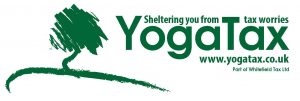Because of the retail nature (supplying direct to the public) of yoga classes, VAT registration can be a large economic burden for a small studio or successful teacher.
The “cliff edge” of the VAT Registration threshold means if your turnover is £89,999 no vat is due, if its £90,001 then you pay VAT on everything.
As an extreme example, if your turnover is £89k you pay no VAT. If your turnover is £91,000, you pay £15,166. If you do go over the VAT threshold the break even turnover is £108,000.
Mitigation Options
A few practical and legal suggestions for mitigation:
- Restructure an existing business into two businesses, eg separate out teacher trainings or retreats from regular classes
- Use the Flat Rate Scheme
- Some Studios can use agency arrangements – restructure so they act as agents of each teacher, meaning the studios turnover becomes its share rather than the gross income. This can also work for other situations, eg jointly run workshops or retreats.
There are pros and cons with all of these, and all need to be properly set up and implemented to avoid HMRC anti avoidance rules. Please take advice from ourselves or another accountant on these arrangements as extreme care is needed.
Restructure an Existing Businesses into Two Businesses
This is known as “Business Splitting or Disaggregation” – See our separate help sheet on Business Splitting
Business Splitting must be set up with care, and have commercial rational.
VAT Flat Rate Scheme
The Flat Rate Scheme can help to mitigate some VAT costs but it does depend on your own circumstances.
See our separate help sheet on Flat Rate Scheme
Agency Arrangements for Studios
Yoga Studios – or other Yoga businesses engaging teachers – can investigate the possibilities of using agency arrangements.
How it would work:
- Suppose you have a studio with turnover of £150,000, and you pay other teachers £40,000. You have other costs of £50,000 a year leaving a profit of £60,000.
- Conventionally this would be set up as studio turnover £150,000, costs £90,000, profit £60,000. You’d pay VAT on £150,000.
- Restructuring as an Agency you would:
- Become agent for the teachers
- Collect student fees of £150,000 as teachers agent.
- Charge the teachers collectively £110,000 commission.
- Your accounts are now studio commission income £110,000, costs £50,000, profit £60,000. You pay VAT on £110,000.
- You’ve saved VAT on £40,000
- The turnover and commission needs to be apportioned across each teacher, who will need to have a statement of gross revenue share, commission and net (the net will equate to what they were paid on a sessional basis before)
This will save VAT on the element paid to the teachers. In some cases if a studio is just over the VAT threshold it may take them below it.
Again it is imperative this is set up with care, properly implemented and followed through in disclosure to customers and the public, along with the arrangements being agreed and documented with the teachers. It is strongly recommended such schemes are supported by an experienced accountant.
A similar type of arrangement could be used more adhoc for jointly run retreats or workshops, or for a vat registered studio hosting a visiting teacher. The basic structure would be similar, and the same cautions apply.
For example suppose you own a vat registered studio and you are hosting a workshop from a visiting teacher who is not VAT registered. Conventionally you would account for VAT on all of the workshop income – difficulties arise if a percentage split is agreed and its not made clear whether this is pre or post VAT. Under a Disclosed Agency arrangement, you would only have to account for VAT on your share of the income.


